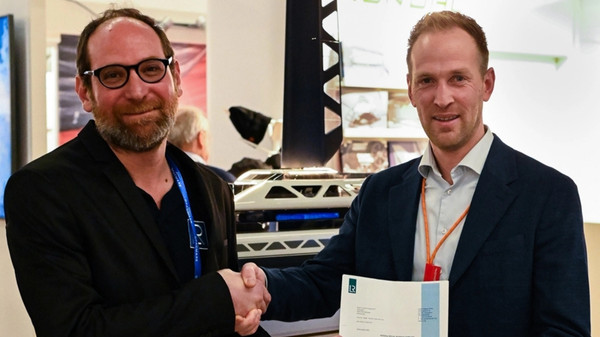

|
SIPG orders Wärtsilä systems for new LNG bunker vessel
Shanghai International Port Group orders integrated cargo handling and fuel systems from Wärtsilä. |
|
|
|
||

|
Integr8 Fuels signs MOU with Pentarch for bunker services at Port of Edrom
Integr8 Fuels and Pentarch Offshore Solutions have signed an agreement to develop bunker fuel services. |
|
|
|
||

|
MISC orders two LNG dual-fuel Suezmax tankers as part of fleet renewal
Malaysian shipowner expands dual-fuel fleet with newbuilds backed by long-term charters. |
|
|
|
||

|
Oilmar DMCC appoints Eunice Low as marine fuels trader in Singapore
Low joins firm's Singapore trading department with a decade of industry experience. |
|
|
|
||

|
HD Hyundai secures $1.46bn order for eight LNG dual-fuel container ships
South Korean shipbuilder reports highest container ship order volume since 2007 supercycle. |
|
|
|
||

|
Clean Arctic Alliance urges IMO action on black carbon after COP30 disappointment
Environmental coalition calls for Arctic shipping fuel regulations ahead of December 5 deadline. |
|
|
|
||

|
Egypt's petroleum ministry and Suez Canal Authority sign MOU for LNG bunkering facility
Ministry and canal authority to develop LNG supply station in Port Said. |
|
|
|
||

|
Meyer Turku starts first main engine on Legend of the Seas cruise ship
Finnish shipbuilder fires up Wärtsilä engine ahead of 2025 Royal Caribbean delivery. |
|
|
|
||

|
Malik Energy launches internal leadership development programme
Marine fuel supplier rolls out training initiative for managers across its supply and energy divisions. |
|
|
|
||

|
Rondal's Aero Wing Sail receives Lloyd's Register approval in principle
Classification society grants AiP for rigid wing-sail concept designed for large yacht applications. |
|
|
|
||
| Shell launches Naturelle S4 stern tube Fluid 100 to meet US EPA regulations [News & Insights] |
| Mobil SHC Aware hydraulic oils approved by Eaton Corporation and Parker Hannifin Denison [News & Insights] |
| Chevron unveils new line of Clarity Synthetic EA Hydraulic and Gear Oils [News & Insights] |
| New EAL service for ship operators [News & Insights] |
| Wärtsilä environmental seal systems allow mineral oil to be used in US waters [News & Insights] |